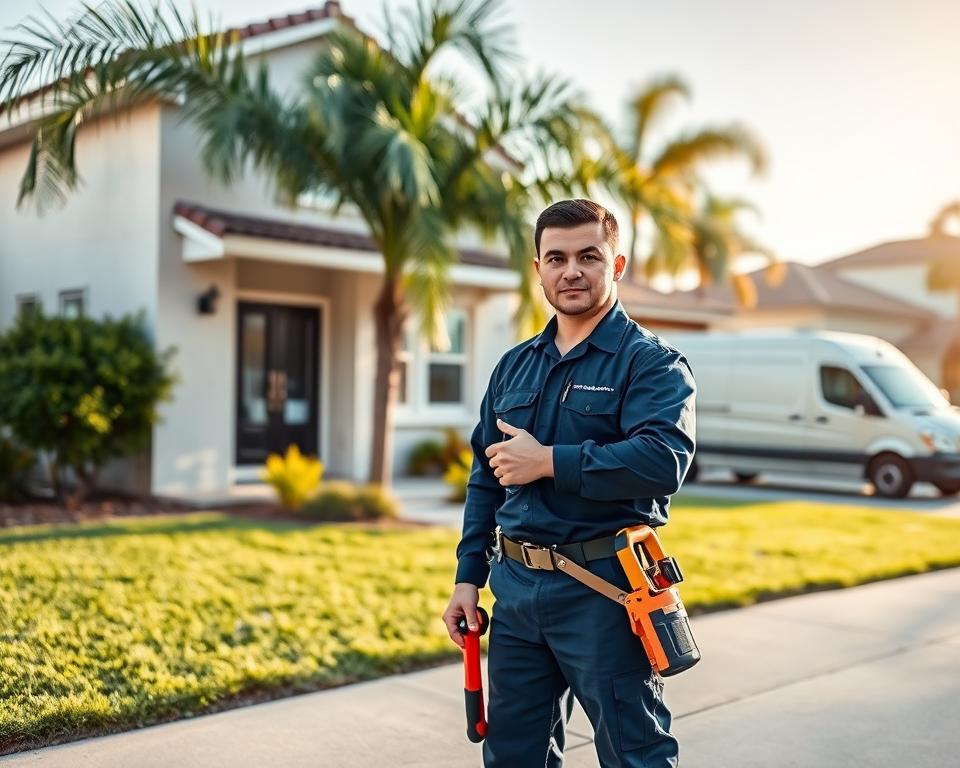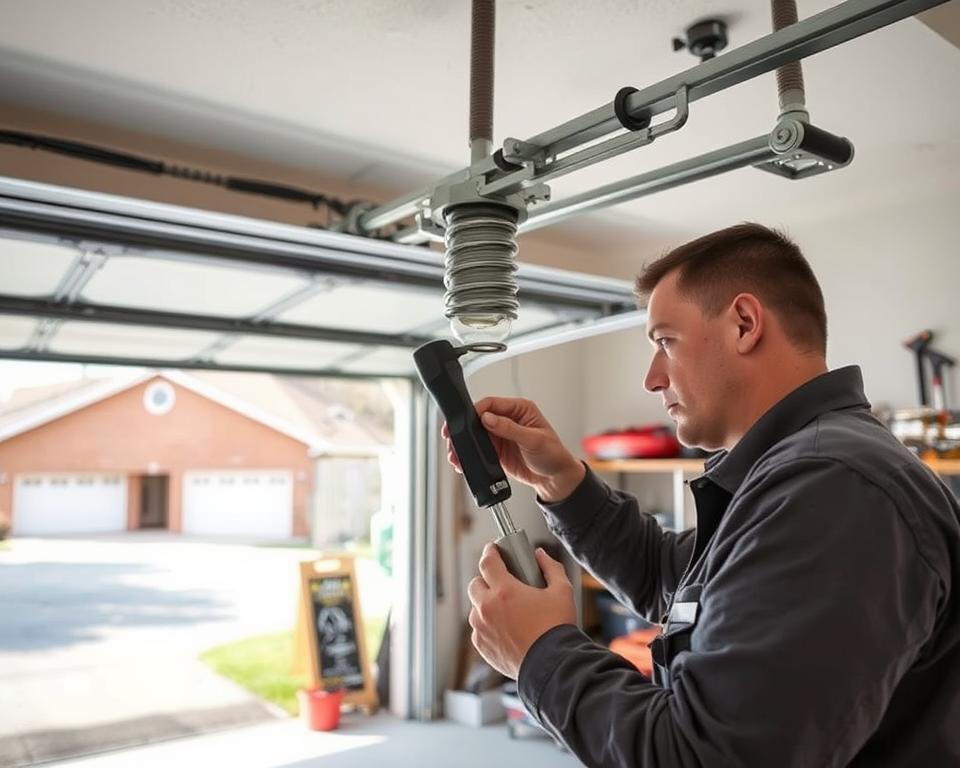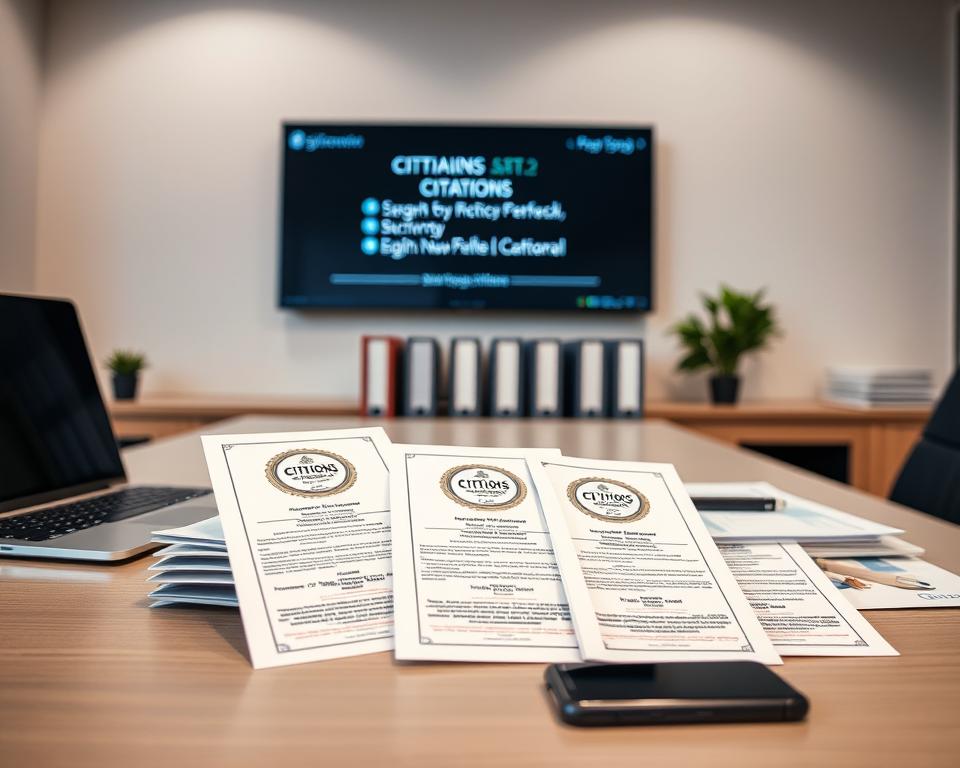Online Internet Promotion 1on1 SEO Calabasas Experts
Did you know that 93% of web encounters start with a query system? This statistic demonstrates how vital online promotion is for businesses today, even more so for local ones in Calabasas. With the right digital marketing 1on1 SEO Calabasas strategies, enterprises can elevate their digital footprint. They can also engage more effectively with their intended customers.
Effective SEO forms the backbone of your web achievements. Leading Calabasas SEO firms such as Marketing1on1 deliver tailored strategies for every company. Their SEO experts in Calabasas prioritize adaptive layouts and user-friendliness. Consequently, your website maintains high functionality from the start.
As digital competition increases, working with seasoned SEO professionals (SEO services near me) can set your business apart. Customized SEO strategies can lead to better search rankings and more organic traffic. This, in turn, enhances interaction with local clientele in Calabasas.
Understanding Digital Marketing
In the modern competitive arena, a well-defined online promotion plan is key to success. Diverse methods including social platforms, informative content, and email outreach strive to raise digital exposure.
A online promotion firm in Georgia can help customize these strategies for your business goals. This way, companies can better engage with customers and build loyalty.
Overview of Digital Marketing Strategies
Digital marketing strategies cover different channels and activities to promote brands online. Every tactic serves a distinct function, enabling tailored engagement with customers:
- Social Networking Promotion: leverages social networks such as Facebook, Instagram, and Twitter for customer interaction and content dissemination.
- Informative Content Promotion: develops high-quality material to draw and retain target viewers.
- Electronic Mailing Strategies: Sends targeted emails to communicate with customers, improving relationships and driving sales.
Integrating these tactics into a full-scale cyber marketing strategy enhances engagement and amplifies brand recognition.

The Value of a Strong Digital Footprint
A solid digital footprint is essential in the modern web era. An effective digital marketing strategy can enhance this presence, helping brands reach more people and engage them better. Consumers often research online before buying, making a solid digital presence critical.
Working with a digital marketing agency in Georgia can offer valuable insights and tools to boost brand visibility. A comprehensive web presence both garners new business and solidifies existing relationships. This is critical to maintaining momentum and increasing revenue.
Defining SEO
SEO, which stands for Search Engine Optimization, is essential for firms seeking to improve their web presence. It entails multiple methods designed to improve a website’s ranking and generate unpaid traffic. With rising competition, Calabasas businesses increasingly rely on expert SEO solutions to differentiate themselves.
The Role and Importance of SEO
SEO’s significance cannot be overstated. It’s about optimizing your website to appeal to search engines, aiming for higher rankings. Improved SEO leads to elevated visibility and consequently more traffic. For Calabasas businesses, effective SEO strategies forge a robust digital footprint that facilitates customer engagement. Essential aspects involve optimizing on-page factors, developing quality content, and building authoritative links.
SEO in Action
The process of SEO involves enhancing content relevance and quality. By focusing on specific keywords, companies attract users searching for those terms. Tools like Google Search Console and SEMRush help track performance and refine strategies. Tailored SEO services in Calabasas also incorporate local tactics to reach customers in the vicinity. These efforts not only elevate both rankings and the overall user journey, resulting in increased conversions.
Advantages of Search Optimization in Calabasas
Proper SEO methods deliver notable benefits for Calabasas enterprises. The advantages of SEO extend well past mere exposure. They cover various aspects of online growth. With the help of experienced local SEO experts, enterprises can apply personalized SEO solutions to strengthen their web image.
Enhanced Presence on Search Results
The most notable benefit of SEO is greater prominence in search outputs. By refining their sites, local companies achieve superior search positions, this results in increased access to potential clients. Studies show that higher rankings are linked to increased visibility and engagement.
Such exposure is essential for attracting customers in a crowded market.
Increase in Organic Traffic
SEO also plays a key role in boosting organic traffic. Companies employing robust SEO methods see substantial growth in their traffic. Autus Digital, a top agency in Calabasas, observes that optimized SEO strategies yield increased leads and higher conversion ratios.
By enhancing content quality, refining site speed, and upgrading user interaction, companies can transform higher traffic into measurable sales and leads. This includes sales growth and customer acquisition.
Partnering with seasoned local SEO specialists enhances the web presence of businesses, setting them up for long-term success in a digital-focused market. Effective SEO results in measurable improvements in search positions, online exposure, and lead quality. This ensures companies maintain an edge over industry giants.
Online Marketing 1on1 SEO Calabasas
In the realm of Online Marketing 1on1 SEO services in Calabasas, tailored solutions are key for local businesses. Marketing1on1 stands out by designing personalized optimization plans tailored to individual business objectives. This custom strategy elevates online presence by finely tuning efforts to local market demands.
Customized SEO Strategies for Local Businesses
Marketing1on1 prioritizes bespoke approaches for regional firms seeking to boost their search visibility. Through in-depth research into search criteria and local competition, the team designs custom optimization blueprints that deliver real results. This method, backed by analytics, optimizes campaigns to boost online presence and drive traffic.
Practical Guidance from Experienced Professionals
The Marketing1on1 team employs a direct, practical method that removes the burden of digital marketing from companies. They support businesses through every phase—from initial planning to execution—ensuring alignment with the client’s goals. They prioritize designing attractive, user-centric, and responsive web platforms. Their support goes further than initial deployment, enabling firms to maintain focus on primary activities while reaping tailored SEO benefits.
How to Pick the Best SEO Agency in Calabasas
Choosing the right SEO agency is critical for a business’s online success in Calabasas. Review their expertise, success stories, and capacity to enhance search performance. A top-tier Calabasas SEO provider understands regional optimization and delivers bespoke strategies.
Key Considerations for Choosing an SEO Partner
- Expertise: Choose providers with proven longevity in the field. This shows they understand effective SEO strategies.
- Client Testimonials: Agencies with 5-star ratings, like Marketing1on1, are known for their success.
- Specialization: Opt for specialists skilled in full-spectrum optimization.
- Success Stories: Examining case examples reveals tangible outcomes.
- Transparency: Ask about their SEO processes, tools, and how they measure success.
- Pricing: Establish a budget that aligns with standard industry rates for SEO services.
What Makes Marketing1on1 a Leader in Calabasas SEO
Marketing1on1 has been Calabasas’s #1 SEO agency for five years. They boast over 500 successful SEO projects. Their services cover a range of solutions including technical SEO, creative content development, and effective link acquisition.
Numerous local companies report enhanced digital presence and increased leads due to their methods. This focus on data-driven and customized solutions sets them apart.
Essential SEO Solutions for Calabasas Businesses
Calabasas businesses can boost their online presence with various SEO services. Techniques covering on-site and off-site optimization are crucial for increased natural traffic and superior search positions. Local SEO Calabasas services focus on connecting businesses with their community.
Internal and External Optimization Methods
Internal optimization involves refining content, conducting keyword analysis, and adjusting meta elements. This elevates site appearance and user satisfaction. Principal offerings consist of:
- Content optimization with targeted keywords to attract relevant traffic.
- Improving site efficiency with responsive design and performance tweaks.
- Leveraging analytics platforms for ongoing SEO monitoring.
External optimization strengthens site reputation and visibility beyond its content. This includes:
- Acquiring authoritative links via collaborative outreach.
- Utilizing social platforms to enhance brand exposure.
- Connecting with key opinion leaders to extend brand influence.
Local SEO Optimization Services
Local SEO services in Calabasas focus on businesses within the city. They aim to increase visibility in local search results. Effective strategies include:
- Google My Business optimization to ensure accurate business information.
- Citation-building campaigns for consistent directory listings.
- Local keyword research to enhance targeting for community audiences.
Using adaptable SEO practices ensures alignment with evolving trends. With a focus on clear communication and personalized approaches, local businesses achieve remarkable improvements. These include a dramatic boosts in web visits and search term performance. Detailed reporting monitors key metrics, affirming the crucial role of SEO for local success.
How Quality Content Fuels SEO
Compelling content is essential for robust SEO performance. Digital platforms prioritize content that offers real benefits to readers. By prioritizing quality content, businesses can improve their search rankings and visibility. Developing informative and captivating material is crucial for drawing and retaining visitors, thereby increasing organic reach.
Why Superior Content Matters for SEO
Superior material significantly influences SEO performance. It’s not just about possessing impeccable writing; it must also meet user needs by answering their queries. For example, FloridaFresh, a new enterprise, implemented targeted SEO strategies and local outreach to expand their web presence. They experienced a twofold rise in traffic and a 75% jump in sales. Their case highlights the transformative effect of exceptional content on traffic and conversion rates.
Tactics for High-Impact Content Production
Successful content tactics drive organic growth and user engagement. Employ the following methods:
- Develop meaningful and pertinent material: Concentrate on subjects that appeal to your customers and address their challenges.
- Optimize for keywords: Research and incorporate keywords naturally to enhance search engine visibility without compromising content quality.
- Employ multiple content forms: Use a mix of articles, multimedia, and visual aids to capture diverse audience interests.
- Promote content through various channels: Utilize social media, email marketing, and online forums to broaden your content’s reach.
Such approaches are designed to deliver compelling and useful material while optimizing for search engines. This allows local companies to differentiate themselves in a crowded field.
SEO Analytics and Performance Measurement
Effective SEO management heavily depends on precise measurement and monitoring of key performance metrics. Businesses can use SEO analytics tools to assess their strategies’ effectiveness and identify areas for improvement. Grasping the metrics behind SEO enables strategic adjustments grounded in actual results. This leads to greater visibility and engagement.
Tools for Tracking SEO Performance
A variety of analytical tools assist companies in monitoring their search optimization efforts effectively. They deliver data on key performance indicators crucial for evaluating search success. Some popular tools include:
- This tool tracks detailed visitor statistics and behavior patterns.
- It offers detailed reports on keywords and rivals.
- This tool is essential for analyzing backlinks and on-site factors.
- Moz offers guidance on keyword performance and technical improvements.
- Google Search Console: Monitors website performance in Google search results.
Interpreting SEO Metrics and Insights
Grasping search optimization data is crucial for effective online promotion. Businesses should focus on key insights such as:
- The volume of natural site visitors shows overall reach.
- This indicates how many users exit the site after a single page view.
- Page Load Time: Affects user experience and ranking on search engines.
- The proportion of users taking target actions shows campaign effectiveness.
Regular data analysis allows businesses to optimize their digital approaches effectively. Such a methodical strategy drives long-term success and better SEO outcomes.
Typical Pitfalls in Search Optimization
Understanding and avoiding common SEO mistakes is critical for online visibility. Numerous companies fall prey to mistakes that lower their search performance. Recognizing these missteps enables improved tactics and greater results.
Excessive Keyword Use
Overuse of keywords is a common error in search optimization. While relevant keywords are important, too many keywords reduce content quality and user engagement. Search engines may penalize sites for this, leading to lower rankings. It’s best to integrate key phrases organically while ensuring quality content.
Overlooking Mobile-Friendly Design
Neglecting responsive design can severely impact user experience. Given the high volume of mobile users, a site that isn’t mobile-friendly loses visitors. Implementing a mobile-friendly design ensures a seamless browsing experience, positively influencing search engine rankings.
Companies need to regularly review site speed, URL structure, and internal linking for optimal results. Implementing clean URL structures, ensuring unique content, and maintaining an appropriate internal linking strategy are essential.
| SEO Mistake |
Impact |
Remedy |
| Keyword Overstuffing |
Decreased readability; possible penalties |
Use keywords naturally; focus on content quality |
| Lack of Mobile-Friendliness |
Higher bounce rates; poor user experience |
Optimize site for mobile devices; ensure cross-device functionality |
| Messy URL Architecture |
Difficult navigation; search engine issues |
Simplify URLs with standard formatting |
| Weak On-Site Linking |
Lowered navigation quality; diminished authority |
Establish a structured and relevant linking system |
| Poor Load Times |
Increased bounce rates; degraded user satisfaction |
Optimize images; use speed improvement tools |
Case Studies: Success Stories from Calabasas Businesses
Calabasas’s small business scene is thriving, with a wealth of achievements in SEO. Companies like Marketing1on1 have transformed local enterprises. Through focused cyber marketing, they’ve elevated their digital presence and revenue.
Businesses That Benefited from Marketing1on1
In Calabasas, several businesses have seen major improvements with SEO. Iron Tribe Fitness, for instance, implemented focused advertising and conversion funnels. They secured $1 million in memberships from $250,000 spent on advertising, achieving a 4:1 return. This proves that strategic advertising drives success in the fitness industry.
RoseBoxNYC also experienced notable progress, increasing ROAS via refined digital strategies. This demonstrates the impact of strategic promotion on e-commerce success.
How Search Optimization Fuels Regional Expansion
Healthcare services like CoolStream and WaveFlow have witnessed a boost in client appointments, thanks to robust digital strategies. The Economic Development Partnership of Alabama (EDPA) has also illustrated the impact of strategic event campaigns. Even outside Calabasas, successful strategies can boost ticket sales for local events.
Yes You Can! realized a 5:1 ROI through strategic celebrity-endorsed social media ads. This highlights the value of celebrity influence in boosting revenue.
These examples reveal how strategic SEO drives local business expansion. They show how strategic digital marketing can lead to significant advancements and returns. Key firms like NinjaPromo, Syrup, and Modo Modo Agency offer bespoke services that meet local needs.
Emerging Directions in Online Promotion and SEO
Rapid technological advances and evolving user habits continuously reshape the digital landscape. SEO trends are transforming, centering on the integration of advanced digital tools. Staying current with these trends is essential for maintaining a market edge.
Emerging Technologies Affecting SEO
The rise of mobile search is transforming consumer behavior, as half of searches are locally focused, and these searches are often focused on making specific decisions, with 45% aimed at purchasing something. This shows a strong buying signal among mobile users, making rapid load times and ease-of-use critical. Most consumers demand speed and simplicity, making it imperative for brands to improve mobile optimization.
Technologies like geolocation, geofencing, and beacons are changing marketing by allowing for real-time, personalized messages that foster deeper engagement. Brands can deliver personalized notifications according to user location, strengthening ties. Also, using analytics and website heat maps to track user engagement is essential. This data helps businesses understand visitor behavior, guiding their decisions and strategies.
Anticipated Changes in SEO Practices
Trust is key in consumer decisions, with 73% of people trusting a business based on its service quality. A majority of 62% lean towards companies with positive feedback, underlining the importance of reputation. Furthermore, 47% value exceptional customer support, which boosts trust. In 2024, 60% of marketers plan to use more AI in marketing. This move heralds a shift in SEO tactics towards data-driven automation. It’s vital for enterprises to adapt continuously to these dynamic trends. Adopting new technologies and methodologies is key to long-term online success.
The Bottom Line
This article has delved into the core aspects of SEO and its critical role for businesses aiming to excel in the digital age. Premier cyber marketing companies in Calabasas deliver diverse, comprehensive services. This demonstrates how tailored search strategies enhance digital presence and drive natural expansion.
Considering SEO, the importance of innovative methods and analytical insights is clear. The collaboration between companies and expert agencies such as Marketing1on1 is essential for sustainable growth. By integrating analytics-driven tactics with clear objectives, businesses can maximize their market potential.
As Calabasas businesses move forward in the digital world, investing in professional SEO services is essential for their growth and customer engagement. The innovative strategies of seasoned professionals can help brands differentiate themselves. This ensures they stay relevant and influential in their fields.
FAQ
What is the importance of digital marketing for Calabasas businesses?
Cyber marketing is critical for enterprises in Calabasas. It boosts online presence, engages customers, and fosters brand loyalty. By using targeted strategies, businesses can effectively connect with their audience, driving growth.
What advantages does search optimization offer for my site?
Effective SEO improves online presence by fine-tuning content, meta information, and site architecture. This elevates the site’s position in search outputs, drawing in additional natural visitors and broadening audience reach.
How does search optimization help Calabasas companies grow?
Search optimization provides multiple advantages for companies in Calabasas. It elevates local search rankings, raises visitor numbers, and improves sales effectiveness. Effective SEO strategies give businesses a competitive edge, drawing in more customers.
What is the process behind Marketing1on1’s tailored SEO plans?
Marketing1on1 formulates personalized search strategies by assessing regional trends and individual objectives. They create individualized strategies that address specific needs, leading to improved online performance.
Which factors are important when selecting a local SEO firm?
Assess an agency’s background, customer feedback, and demonstrated outcomes to choose the best SEO partner. Ensure the agency’s approach matches your objectives and produces tangible benefits.
What key SEO services are available in Calabasas?
Calabasas offers a range of SEO services. These include on-page SEO techniques like content optimization and keyword integration, off-page SEO such as backlink building, and local SEO optimization targeting specific areas for greater visibility.
Why is quality content vital for SEO?
Quality content is essential for SEO as it drives engagement and user interaction. It helps establish industry authority and can improve search engine rankings if it meets SEO best practices and provides value to the audience.
How do companies measure the effectiveness of their search optimization?
Businesses can track their SEO strategy performance using analytics tools. These tools measure traffic, conversion rates, and keyword rankings, providing data to refine marketing efforts.
What are some common mistakes to avoid in SEO?
Typical pitfalls comprise overusing keywords, lack of mobile responsiveness, insufficient local focus, and stagnant content. Steering clear of these errors ensures improved rankings and user experience.
What are some examples of Calabasas companies benefiting from Marketing1on1?
Indeed, numerous local enterprises have achieved significant improvements through Marketing1on1. Their success stories reveal boosts in digital visibility, improved sales figures, and long-term expansion.
What future trends should businesses be aware of in digital marketing and SEO?
Businesses should watch for emerging technologies like artificial intelligence and machine learning that are changing SEO. They should also adapt to changes in user behavior and search engine algorithms to stay competitive in the digital landscape.
Conclusion
This article has delved into the core aspects of SEO and its critical role for businesses aiming to excel in the digital age. Top digital marketing agencies in Calabasas provide a broad spectrum of services. These insights prove that tailored SEO approaches effectively increase visibility and generate organic growth.
In light of modern SEO practices, innovative techniques combined with data-driven strategies are paramount. The alliance with seasoned professionals like Marketing1on1 is crucial for enduring digital triumph. Integrating informed SEO plans with clear business targets allows enterprises to achieve their market ambitions.
For local companies progressing in today’s online ecosystem, commitment to expert search optimization is key to expansion and engagement. Cutting-edge techniques from experienced specialists ensure brands remain competitive. This secures their position as leaders in their industry.
FAQ
What is the importance of digital marketing for Calabasas businesses?
Digital marketing is key for Calabasas businesses. It enhances digital visibility, builds customer relationships, and strengthens brand identity. Tailored marketing approaches enable effective audience engagement and spur expansion.
What advantages does search optimization offer for my site?
SEO enhances a website’s visibility by optimizing elements like keywords, meta tags, and site structure. This ensures improved standings in query results, attracting more organic traffic and increasing exposure to Calabasas’s customers.
Why should Calabasas firms invest in effective SEO?
Search optimization provides multiple advantages for companies in the region. It increases exposure in community-based queries, drives natural traffic, and improves sales metrics. Effective SEO strategies give businesses a competitive edge, drawing in more customers.
How does Marketing1on1 create customized SEO strategies?
Marketing1on1 develops customized optimization plans through detailed market research and client consultation. They create individualized strategies that address specific needs, leading to measurable improvements.
What should I consider when choosing an SEO agency in Calabasas?
When choosing an SEO agency in Calabasas, consider their experience, client testimonials, and proven results. It’s important to select a partner that aligns with your goals and can deliver measurable outcomes.
What key SEO services are available in Calabasas?
Calabasas offers a range of SEO services. These include on-page SEO techniques like content optimization and keyword integration, off-page SEO such as backlink building, and local SEO optimization targeting specific areas for greater visibility.
How does superior content impact search rankings?
Superior material is pivotal for effective search optimization because it fosters engagement. It builds credibility and improves search performance when aligned with optimization standards.
How can businesses track the performance of their SEO strategies?
Businesses can track their SEO strategy performance using analytics tools. These platforms offer insights into visitor behavior, engagement, and search performance.
What are some common mistakes to avoid in SEO?
Common SEO mistakes include keyword overstuffing, neglecting mobile optimization, ignoring local SEO, and failing to update content regularly. Avoiding these mistakes is critical for maintaining an effective SEO strategy.
Can you share success stories of Calabasas businesses using Marketing1on1?
Yes, many Calabasas businesses have seen success with Marketing1on1’s services. Their examples highlight enhanced search rankings, elevated engagement, and impressive ROI.
What future trends should businesses be aware of in digital marketing and SEO?
Firms need to be aware of cutting-edge tech like automation and data-driven tools impacting digital marketing. They should also remain flexible in response to evolving consumer habits and algorithm updates.
To Summarize
In summary, we have explored the essential components of search optimization and its significance for modern enterprises. Top digital marketing agencies in Calabasas provide a broad spectrum of services, demonstrating that custom SEO plans can significantly boost a brand’s online visibility and stimulate organic growth.
In light of modern search optimization, advanced strategies and data-driven tactics are paramount. The collaboration between companies and expert firms such as Marketing1on1 is essential for sustainable growth. By employing strategies backed by data and aligning them with business goals, companies can reach their full market capacity.
For local companies advancing in today’s online ecosystem, commitment to expert search optimization is key to expansion and engagement. The innovative strategies of seasoned professionals can help brands differentiate themselves. This guarantees continued market presence and leadership.
FAQ
Why is digital marketing crucial for local enterprises in Calabasas?
Online promotion is essential for companies in Calabasas. It enhances digital visibility, builds strong customer relationships, and solidifies brand identity. Tailored online approaches enable effective engagement and spur expansion.
How can SEO improve a website’s visibility?
Search Engine Optimization improves your site’s ranking through targeted keyword integration, refined metadata, and streamlined design. This elevates its position in search outputs, drawing in additional natural visitors and boosting local visibility.
Why should Calabasas firms invest in effective SEO?
Search optimization provides multiple advantages for companies in the region. It improves visibility in local search results, boosts organic traffic, and enhances conversion rates. Tailored optimization helps companies outperform rivals and capture local market share.
What is the process behind Marketing1on1’s tailored SEO plans?
Marketing1on1 formulates personalized search strategies by assessing regional dynamics and individual requirements. They create individualized strategies that address specific challenges, leading to measurable improvements.
How can I choose the right SEO partner in Calabasas?
When choosing an SEO agency in Calabasas, consider their experience, client testimonials, and proven results. Ensure the agency’s approach matches your objectives and yields tangible benefits.
What are the main SEO offerings for Calabasas companies?
Calabasas provides various search optimization solutions. These encompass methods such as internal content refinement, external link building, and region-focused optimization.
How does superior content impact search rankings?
Superior material is critical in search optimization because it fosters trust and interaction. It builds credibility and improves search performance when aligned with best practices.
How can businesses track the performance of their SEO strategies?
Businesses can measure their digital success through comprehensive tracking systems. These systems offer detailed metrics on site visits, conversions, and rankings, guiding strategy adjustments.
Which errors should be sidestepped in search optimization?
Frequent errors in search optimization involve excessive keyword usage, poor mobile responsiveness, lack of local focus, and outdated material. Preventing these missteps is key to achieving successful digital promotion.
What are some examples of Calabasas companies benefiting from Marketing1on1?
Indeed, numerous local enterprises have achieved remarkable results through Marketing1on1. Their examples highlight enhanced search rankings, elevated interaction, and impressive ROI.
Which emerging trends in online promotion and search optimization are important?
Businesses should watch for emerging technologies like artificial intelligence and machine learning that are changing SEO. They should also adjust strategies in response to ongoing shifts in algorithms and user trends.
The Final Word
Overall, embracing comprehensive digital marketing in Calabasas is vital for companies that wish to expand their web presence and realize long-term growth. Given that 81% of buyers perform online research before buying, a robust digital profile is mandatory. Tactics encompassing SEO, PPC campaigns, and social media outreach are instrumental in boosting visibility and directing traffic. This encourages enduring customer engagement.
Businesses that invest in digital marketing services often experience significant financial benefits. They generate 2.8 times higher revenue growth than their counterparts without a strong online presence. This underscores the importance of digital strategies in achieving competitive success. Given the thriving state of Calabasas’s online ad market, effective digital strategies are absolutely necessary.
In the end, leveraging comprehensive digital marketing strategies in Calabasas equips businesses with a decisive advantage and paves the way for sustained growth. As we move forward, the integration of complete digital marketing solutions will prove instrumental in shaping the future of businesses across the region.
FAQ
Why is digital marketing valuable for local enterprises in Calabasas?
Digital marketing is key for Calabasas businesses. It boosts online presence, engages customers, and fosters brand loyalty. Tailored online tactics enable companies to reach their target market and stimulate expansion.
How can SEO improve a website’s visibility?
Search Engine Optimization improves your site’s ranking through strategic keyword integration, refined metadata, and streamlined design. This makes the site rank higher on search engine results pages, attracting more organic traffic and increasing exposure to Calabasas’s customers.
Why should Calabasas firms invest in effective SEO?
Effective SEO delivers significant gains for local enterprises. It elevates regional search rankings, raises traffic, and leads to better sales performance. Effective SEO strategies give businesses a competitive edge, drawing in more customers.
How does Marketing1on1 create customized SEO strategies?
Marketing1on1 crafts tailored SEO strategies by analyzing local market trends and understanding specific business needs. They develop hands-on solutions that meet each client’s unique requirements, ensuring effective visibility and growth.
Which factors are important when selecting a local SEO firm?
When choosing an SEO agency in Calabasas, consider their experience, client testimonials, and proven results. Ensure the agency’s approach matches your objectives and yields tangible benefits.
What key SEO services are available in Calabasas?
Calabasas offers a range of SEO services. These cover strategies from on-site improvements to off-site authority building and local targeting.
What makes high-quality content essential in SEO?
Quality content is essential for SEO as it drives engagement and user interaction. It builds credibility and enhances search performance when aligned with best practices.
How do companies assess the effectiveness of their search optimization efforts?
Businesses can measure their digital success via comprehensive tracking systems. These instruments deliver detailed metrics on site visits, conversions, and rankings to guide strategy adjustments.
What pitfalls in SEO should businesses be wary of?
Frequent errors in search optimization involve excessive keyword usage, poor mobile design, lack of regional focus, and outdated material. Avoiding these mistakes is critical for maintaining an effective SEO strategy.
Could you provide case studies of local firms succeeding with Marketing1on1?
Indeed, numerous local enterprises have achieved remarkable results through Marketing1on1. Their success stories reveal boosts in digital visibility, enhanced engagement, and long-term expansion.
Which emerging trends in online promotion and search optimization are important?
Firms need to be aware of cutting-edge tools like machine learning and advanced analytics influencing digital marketing. They should also remain flexible in response to evolving consumer habits and algorithm updates.










